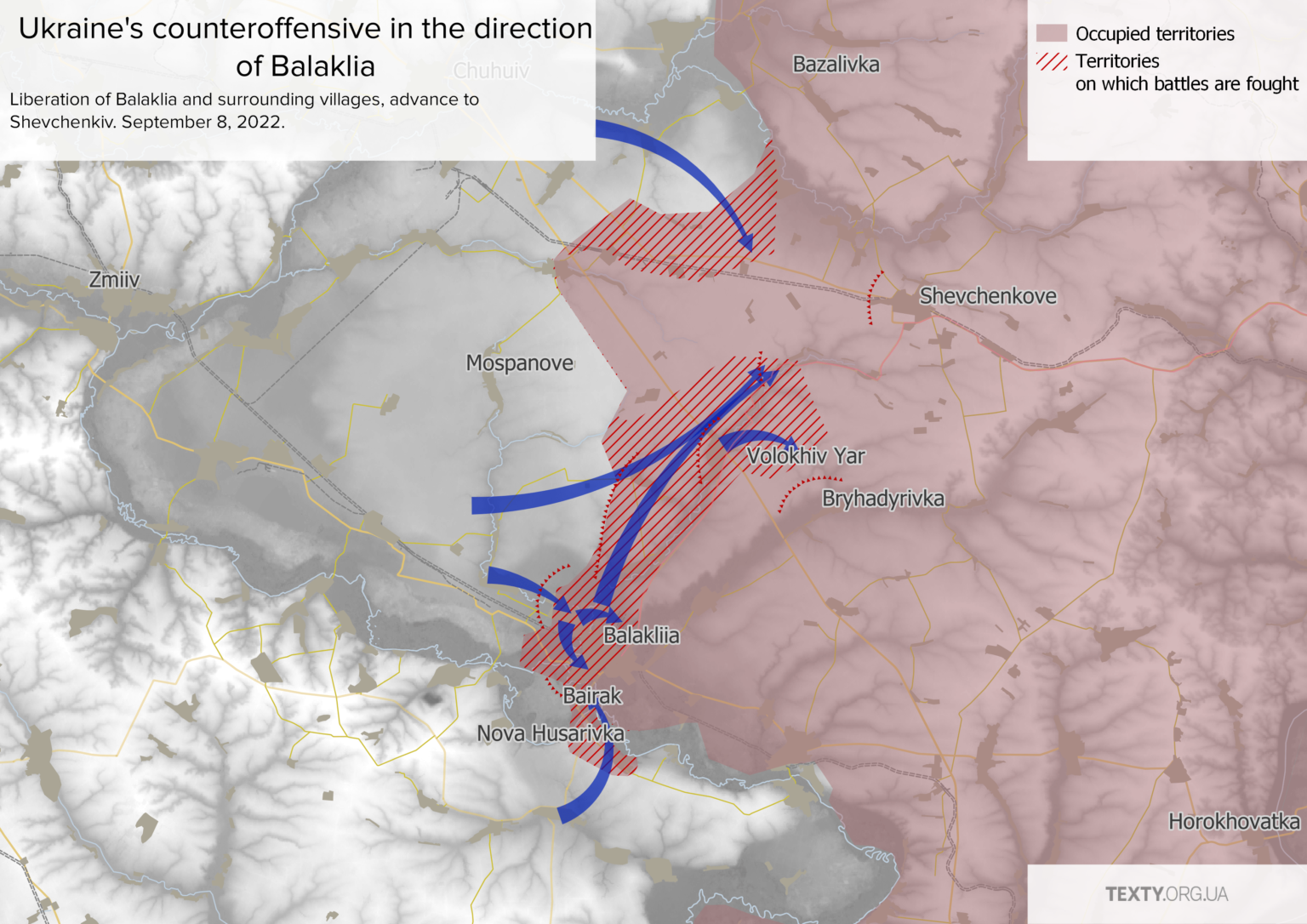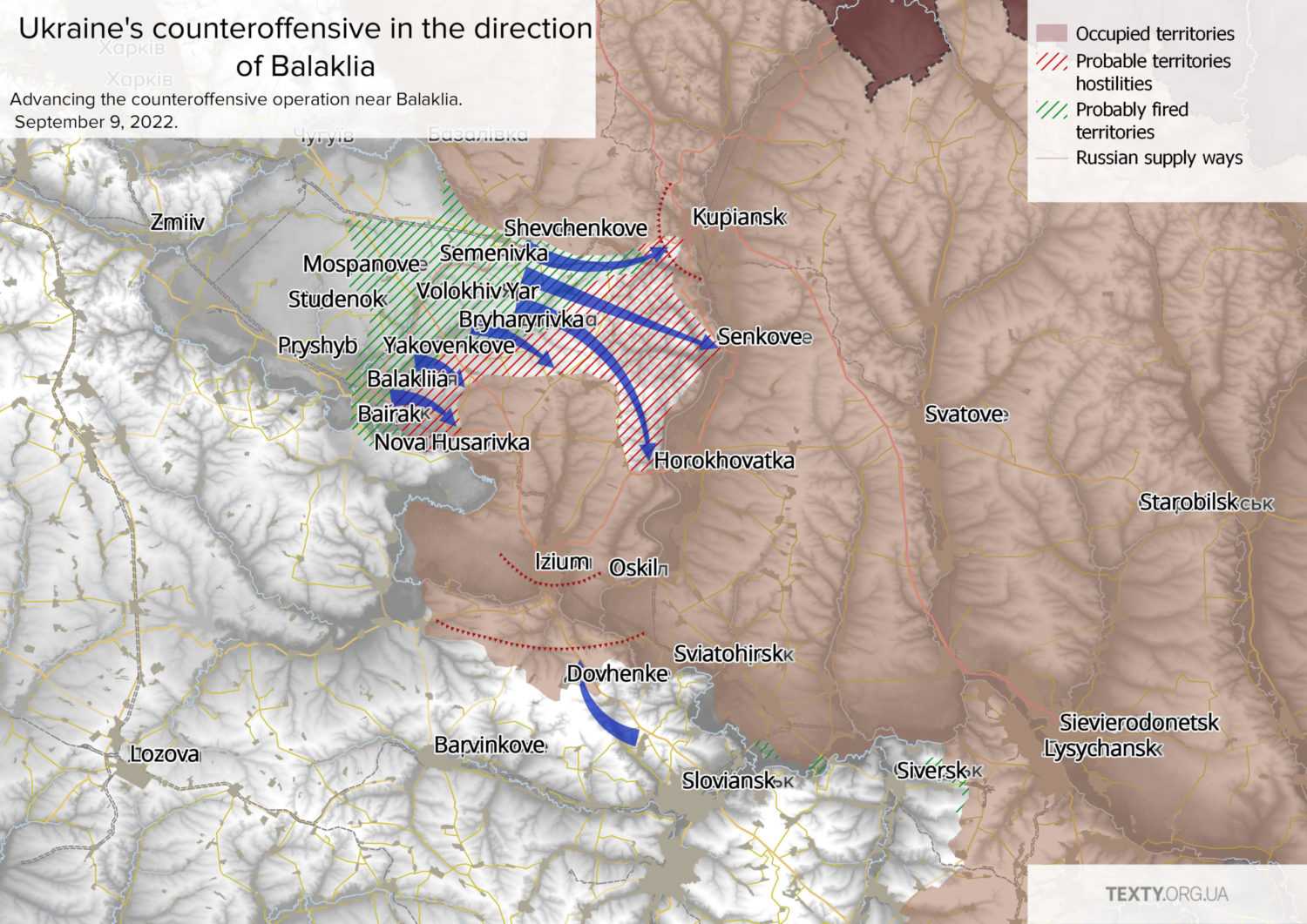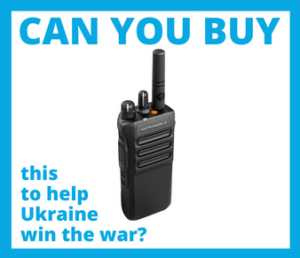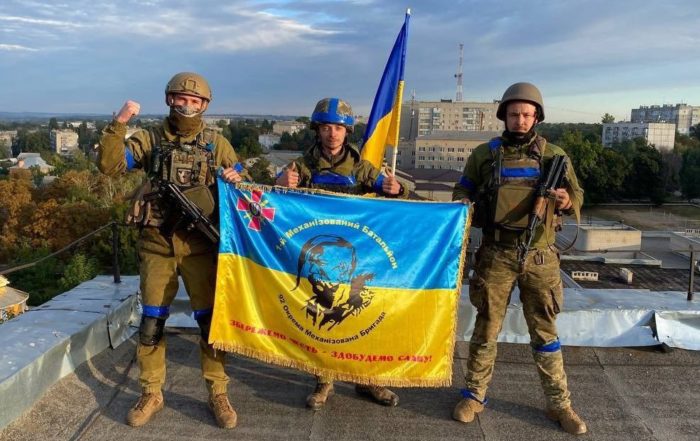In the newest development of the Russo-Ukrainian war, Ukraine has conducted a blitzkrieg-like counteroffensive in Kharkiv Oblast, advancing 75 km in the last four days and retaking the major cities of Balakliia (Balakliya), Izium, and Kupiansk, among dozens of others. We talked to Mykola Bielieskov, a Research Fellow at Ukraine’s National Institute for Strategic Studies, to understand the reasons behind this remarkable success, unseen since late March 2022, when Russian troops retreated from northern Ukraine after a failed attempt to take the capital.
How could the Ukrainian Army break through Russia’s lines of defense and advance to such a depth so quickly? Which tactics did they use and why are the Russians retreating so quickly?

The defense was broken so quickly most likely because the Russians lacked forces. The front is more than 1300 km long, and the Russians have 200,000-250,000 troops. This is decisively insufficient to create a serious tiered defense. Most likely, they only had one tier of defense to the north of Balakliia and the Russians’ defense forces mainly consisted of SOBR rapid-response teams that are not specialized in general warfare but in suppressing protest actions.
Russia had only one line of defense, Ukraine broke through it and then introduced its breakthrough development echelon that did not enter the cities but went in the direction of Volokhiv Yar, Shevchenkove, Kupiansk, and basically started to cut off communications.
So we exploited the fact that Russia did not have a tiered defense and had very weak forces at the frontline. And then we concentrated prevailing forces that quickly broke through the line of defense and then introduced the breakthrough development echelon, i.e. conducted a classic maneuver war, the point of which is not to capture settlements but to quickly reach a frontier to cut off communications.


So Ukraine has more troops than Russians now?
We have more manpower overall; for the 200,000-250,000 deployed Russians we have one million; of course, one million does not fight all at the same time but we could create a preponderance of forces to quickly break through the defense and then introduce the classical breakthrough development echelon based on advanced units that included military intelligence and security service units that acted as raid squads.
So Ukraine conducted a classical offensive operation — created a preponderance of forces and a breakthrough development echelon that has the required mobility, and then put it into action. Additionally, Ukraine exploited features of the environment, exploiting the Oskil water reservoir [to the east of Izium] that covers us greatly and basically rules out enemy maneuvers. It limits what we can do but it also covers us up.
The Balakliia-Izium-Kupiansk blitzkrieg, as per https://t.co/5rarhi2vFC pic.twitter.com/397EGnE2Mx
— Euromaidan Press (@EuromaidanPress) September 10, 2022
Some analysts have supposed that a part of the success was that Ukraine announced an offensive in the south and hit near Kharkiv. Do you think this indeed helped conduct the counteroffensive near Kharkiv?
I agree this helped Ukraine because the Russians used their forces to create a tiered defense in the south, and consequently did not do that on the other sections of the front, first of all, where we attacked. And I know that the 200,000-250,000 troops that Russia has located along the front are insufficient. They stretched them out into one line and in many places, there are no reserves, no tiered defense. But I agree with the hypothesis that we tricked the enemy, made it redistribute its forces and now it will be difficult for it to conduct a maneuver in the opposite direction.
On other sections of the front, Ukraine’s successes are much more modest. Why is that?
Yes, we have a million troops, but we still lack armored vehicles and heavy weapons. We concentrated everything we could in the region of the Balakliia-Kupiansk-Izium offensive operation. But nevertheless, the Russians could have their front even more imbalanced, as they are obviously redeploying their forces, which means there will likely be more opportunities to attack. Their main problem is the 200,000-250,000 troops stretched along a 1,300-kilometer-long front. You need millions of troops to seriously hold such a frontline, to avoid situations that happened near Balakliia.
Does Russia have the potential to increase its troop numbers in Ukraine?
Not quickly. Although they’re saying that they have some reserves in the region of Belgorod Oblast. Maybe they will be put into action, which is why Ukraine needs to look after the north flank, and prepare its frontiers… But the Russians will use these reserves to create a new tier of defense, not to outplay the results of this operation.
We saw that for many months the frontline remained basically stable, sans small areas that were “gnawed” through. Why is this rapid advance happening specifically now?
Because we greatly exhausted them through our defense operations. They lost, according to US data, 80,000 wounded and killed, and 50,000 killed soldiers according to Ukrainian data. They lost lots of armored vehicles. The opportunities for the offensive arose because we conducted good defensive actions and distracted the Russians in the south, misleading them to believe the main attack would be there.
So, partially we are reaping the rewards of our defensive operation which exhausted the enemy, partially we distracted it to the south, and partially it reaps the fruit of its decision to start a war against Ukraine of this scale with modest forces. So it’s a complex of factors.
How long will Ukraine be able to sustain this momentum? Do you think that all the occupied territories will be liberated this way, or should we count on something else?
I don’t rule out that after they try to plug the hole and form a new frontline which will be to the east of the Oskil water reservoir, the front may become imbalanced in other directions. It all depends on two things:
- if Ukraine’s command can quickly identify where the enemy has gotten weaker;
- if we will have enough strength, especially enough mobility.
In this offensive, all the significance of soldiers being on at least some armored wheels, for them to be able to quickly maneuver, quickly move along roads, not even entering settlements but quickly cutting off supply lines. So if they can quickly identify where the enemy has become weaker they will try to once again carry out an offensive operation.
Overall, we shouldn’t overestimate Ukraine’s ability to quickly turn the tide in its favor. Although I think psychologically this victory will have a great effect; it will contribute to the demoralization of Russians, and then winter will start, and I think the Russian army will come out of it totally demoralized.
Apart from armored vehicles, what does the Ukrainian Army need now?
More rocket artillery systems, more reconnaissance systems, means of mobility, and communication means to be able to coordinate all this mass. And of course air defense, because the enemy is trying to actively employ aviation. The list remains stable. And now we see how important means of mobility are, for them to be able to quickly move, quickly identify gaps in the combat order and reach the maximal frontiers, and thus turn tactical successes into operational successes. Because this is now objectively an operational success, with a breakthrough depth of 75km, this is phenomenal for only four days. And this powerful flank strike, this threat for Izium and everything that the Russians have there — we see why we need more means of mobility — to conduct a real maneuver war after a breakthrough of the tactical depth of defense.
Related:
- What Ukraine really needs to launch a counteroffensive against Russia
- Javelins are good, but it is artillery strikes that coined Ukraine’s military success
- Six reasons the West can settle for nothing less than Ukrainian victory
- How Ukraine pulled off its daring counteroffensive at Balakliia (and what is the next target)




